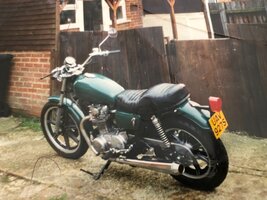BarrieC
XS650 Addict
Hi Guys,
found damage to small end of my conrod yesterday - dropped i assume by previous owner, or one of the many while, the engine has been in dismantled state! ( I cant believe i had not spotted this earlier, I think i focused too much on the bearing conditions)
So, biting the bullett, I have to replace the Conrods.............I want to take as much off the crank as possible before handing over to a suitable mechanic/engineer.
The crank is (always has been in my hands) out of the cases - looking for some suggestions as how to hold/lock/support the crank to take the Pinion/oil pump side nut off the crank.
Many thanks
Barrie
found damage to small end of my conrod yesterday - dropped i assume by previous owner, or one of the many while, the engine has been in dismantled state! ( I cant believe i had not spotted this earlier, I think i focused too much on the bearing conditions)
So, biting the bullett, I have to replace the Conrods.............I want to take as much off the crank as possible before handing over to a suitable mechanic/engineer.
The crank is (always has been in my hands) out of the cases - looking for some suggestions as how to hold/lock/support the crank to take the Pinion/oil pump side nut off the crank.
Many thanks
Barrie

